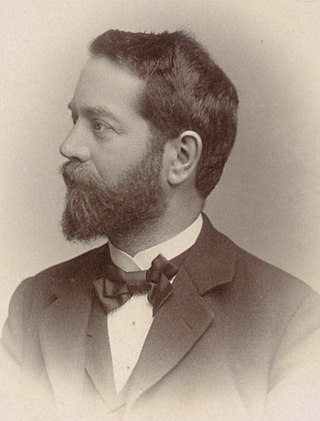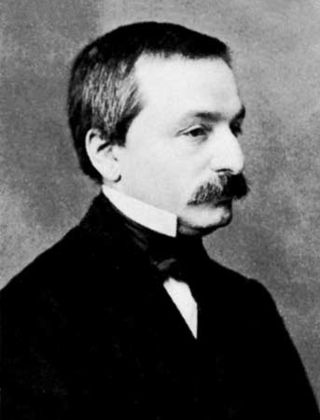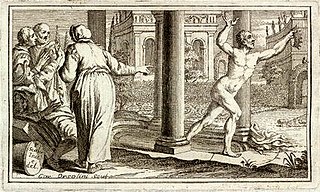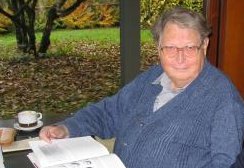
Johann Carl Friedrich Gauss was a German mathematician, geodesist, and physicist who made significant contributions to many fields in mathematics and science. Gauss ranks among history's most influential mathematicians.

Marie-Sophie Germain was a French mathematician, physicist, and philosopher. Despite initial opposition from her parents and difficulties presented by society, she gained education from books in her father's library, including ones by Euler, and from correspondence with famous mathematicians such as Lagrange, Legendre, and Gauss. One of the pioneers of elasticity theory, she won the grand prize from the Paris Academy of Sciences for her essay on the subject. Her work on Fermat's Last Theorem provided a foundation for mathematicians exploring the subject for hundreds of years after. Because of prejudice against her sex, she was unable to make a career out of mathematics, but she worked independently throughout her life. Before her death, Gauss had recommended that she be awarded an honorary degree, but that never occurred. On 27 June 1831, she died from breast cancer. At the centenary of her life, a street and a girls’ school were named after her. The Academy of Sciences established the Sophie Germain Prize in her honour.

Christian Felix Klein was a German mathematician and mathematics educator, known for his work with group theory, complex analysis, non-Euclidean geometry, and on the associations between geometry and group theory. His 1872 Erlangen program, classifying geometries by their basic symmetry groups, was an influential synthesis of much of the mathematics of the time.

The third of Hilbert's list of mathematical problems, presented in 1900, was the first to be solved. The problem is related to the following question: given any two polyhedra of equal volume, is it always possible to cut the first into finitely many polyhedral pieces which can be reassembled to yield the second? Based on earlier writings by Carl Friedrich Gauss, David Hilbert conjectured that this is not always possible. This was confirmed within the year by his student Max Dehn, who proved that the answer in general is "no" by producing a counterexample.

In geometry, a heptadecagon, septadecagon or 17-gon is a seventeen-sided polygon.
Guy Waldo Dunnington was a writer, historian and professor of German known for his writings on the famous German mathematician Carl Friedrich Gauss. Dunnington wrote several articles about Gauss and later a biography entitled Gauss: Titan of Science (ISBN 0-88385-547-X). He became interested in Gauss through one of his elementary school teachers, Minna Waldeck Gauss Reeves, who was a great-granddaughter of Gauss.
In mathematics, the uniformization theorem says that every simply connected Riemann surface is conformally equivalent to one of three Riemann surfaces: the open unit disk, the complex plane, or the Riemann sphere. The theorem is a generalization of the Riemann mapping theorem from simply connected open subsets of the plane to arbitrary simply connected Riemann surfaces.

Leopold Kronecker was a German mathematician who worked on number theory, algebra and logic. He criticized Georg Cantor's work on set theory, and was quoted by Weber (1893) as having said, "Die ganzen Zahlen hat der liebe Gott gemacht, alles andere ist Menschenwerk". Kronecker was a student and lifelong friend of Ernst Kummer.
In number theory, the Baker–Heegner–Stark theorem establishes the complete list of the quadratic imaginary number fields whose rings of integers are unique factorization domains. It solves a special case of Gauss's class number problem of determining the number of imaginary quadratic fields that have a given fixed class number.
The year 1796 in science and technology involved some significant events.
In mathematics, the Gauss class number problem, as usually understood, is to provide for each n ≥ 1 a complete list of imaginary quadratic fields having class number n. It is named after Carl Friedrich Gauss. It can also be stated in terms of discriminants. There are related questions for real quadratic fields and for the behavior as .
Kurt Heegner was a German private scholar from Berlin, who specialized in radio engineering and mathematics. He is famous for his mathematical discoveries in number theory and, in particular, the Stark–Heegner theorem.

Ferdinand Gotthold Max Eisenstein was a German mathematician. He specialized in number theory and analysis, and proved several results that eluded even Gauss. Like Galois and Abel before him, Eisenstein died before the age of 30. He was born and died in Berlin, Prussia.

In mathematical knot theory, the Hopf link is the simplest nontrivial link with more than one component. It consists of two circles linked together exactly once, and is named after Heinz Hopf.
In mathematics, the convergence condition by Courant–Friedrichs–Lewy is a necessary condition for convergence while solving certain partial differential equations numerically. It arises in the numerical analysis of explicit time integration schemes, when these are used for the numerical solution. As a consequence, the time step must be less than a certain time in many explicit time-marching computer simulations, otherwise the simulation produces incorrect results. The condition is named after Richard Courant, Kurt Friedrichs, and Hans Lewy who described it in their 1928 paper.

Paul Isaac Bernays was a Swiss mathematician who made significant contributions to mathematical logic, axiomatic set theory, and the philosophy of mathematics. He was an assistant and close collaborator of David Hilbert.

Eureka is an interjection used to celebrate a discovery or invention. It is a transliteration of an exclamation attributed to Ancient Greek mathematician and inventor Archimedes.
In algebraic number theory, a Gauss sum or Gaussian sum is a particular kind of finite sum of roots of unity, typically

Hans-Ludwig Wußing was a German historian of mathematics and science.
Ostwalds Klassiker der exakten Wissenschaften is a German book series that contains important original works from all areas of natural sciences. It was founded in 1889 by the physical chemist Wilhelm Ostwald and is now published by Europa-Lehrmittel.













